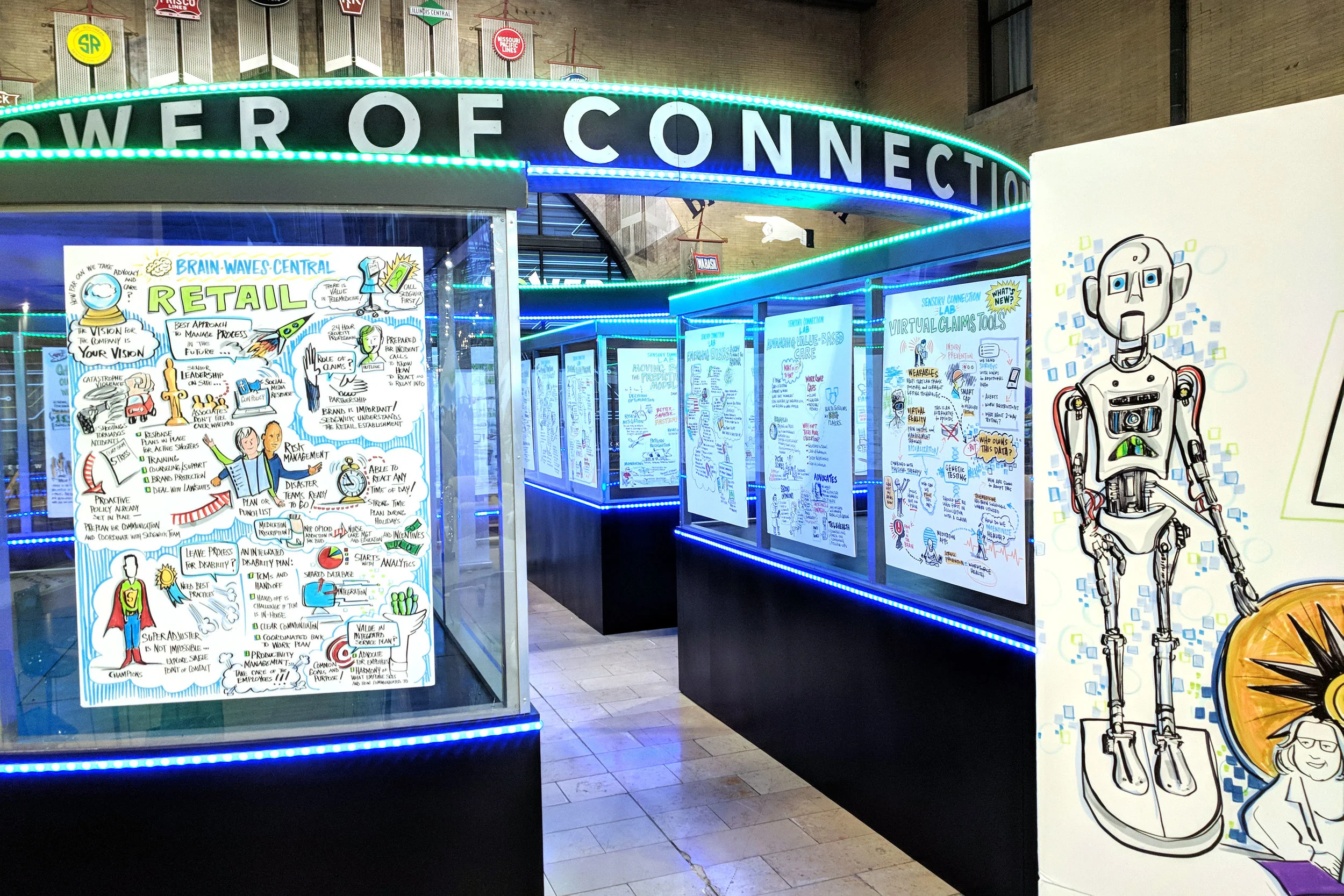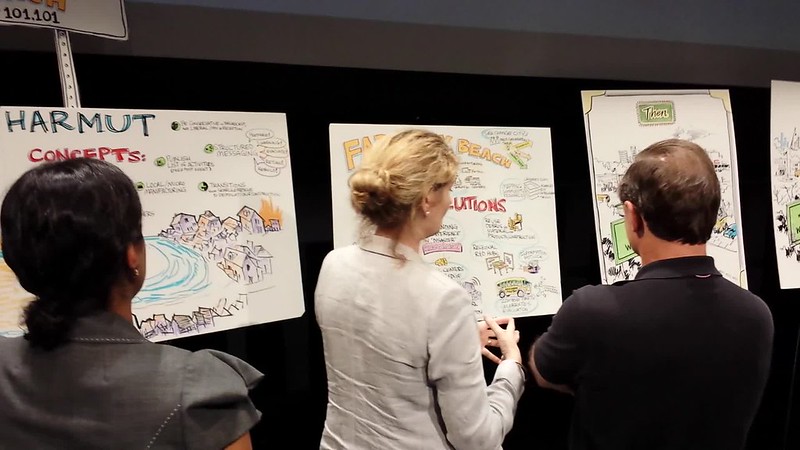Humans are hard-wired for visual learning.
ABOVE: click image to play video from TEDxNashville
Every mark we make as a graphic facilitator is designed to increase engagement and understanding for your audience.
During live meetings and conferences, we capture your big ideas and visualize complex concepts to help people make better decisions.
Want us to rock the markers
at your next meeting or conference?
An effective tool for engagement
Graphic Facilitation is the practice of using words and images during live events.
This visual methodology enables people to understand complexity and to make better decisions. It also serves as an effective tool with several functions:
Creates a conceptual map of a conversation.
Connects data and information to emotion.
Visualizes complex or abstract concepts.
Aids memory and retention of stories, facts, and connections.
Guides individuals and groups through a process.
Since it's founding in 1998, Alphachimp has provided this service for hundreds of intimate brainstorming sessions and high-profile conferences for Facebook, Google, TEDx, TEDMED, Ciudad de las Ideas, and PopTech.
REFERENCES
Keller GB, et al (2012). Sensorimotor Mismatch Signals in Primary Visual Cortex of the Behaving Mouse. Neuron.
Kaufman, B. (2014) The Real Neuroscience of Creativity. The Huffington Post
Bressler, S and Menon, V (2010) Large-scale brain networks in cognition: emerging methods and principles. Trends in Cognitive Sciences.
Designed to work with the human brain
Often times, traditional presentations do not fully use our capacities for cognition, imagination, and action.
83% of people describe themselves as “visual learners”
Research suggests that up to 60% of our brains are hard-wired to be visual learners. Depending on the stage of the creative process — and what you’re actually attempting to create — different brain regions are recruited to handle the task.
Experiential learning is a “whole brain” activity.
There is no Left-Brain/Right-Brain personality. Instead, researchers now find that the function of any cognitive brain network ultimately depends on its multidimensional aspects.
Graphic Facilitation is used by teams and subject matter experts who are dedicated to using more of our brain’s creative capacity during lectures, meetings, conferences, brainstorming, and strategy sessions. This method is instrumental in the creative process, using multiple neural networks:
The Executive Attention Network for tasks requiring that the spotlight of attention is focused like a laser beam.
The Imagination Network for constructing dynamic mental simulations based on personal past experiences to create alternative perspectives and scenarios.
The Salience Network for monitoring both external events and the internal stream of consciousness.
Creative Content = Engaged Audience
By providing stimulating visuals, relevant storytelling, and large-scale objects, Graphic Facilitation creates an environment for your audience to connect to content — and each other.
The resulting images make perfect content for social media, blog posts, articles, and videos.

















